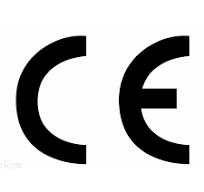-
About us
-
Product
-
News&Events
Understanding EMS Fat Burning Machine Materials: A Guide for Professionals
2025-07-12
Electromyostimulation (EMS) fat burning machines have gained popularity as effective tools for enhancing muscle tone and promoting fat loss. A crucial aspect that often goes unnoticed by users and professionals alike is the materials used in the construction of these machines. Understanding the composition and qualities of these materials can provide insights into their performance, durability, and safety.
Firstly, the outer casing of an EMS fat burning machine is typically made from high-quality plastics or metals. Plastics, such as ABS (Acrylonitrile Butadiene Styrene), are favored for their lightweight nature, resilience, and resistance to impact. This is essential in a medical device context, where durability is crucial for ensuring the machine can withstand regular use without degradation. Metals like aluminum are also used for their strength and ability to dissipate heat, which is particularly important in devices that generate electrical impulses.
The electrodes, integral to the functioning of EMS machines, are usually crafted from conductive materials such as silicon and carbon. These materials are chosen for their excellent conductivity and biocompatibility, making them safe for skin contact. The design of the electrodes is critical, as they must effectively deliver electrical impulses to stimulate muscle contractions without causing discomfort. The use of gel pads or other conductive mediums can enhance comfort and improve contact with the skin, ensuring optimal performance.
Furthermore, insulation materials play a vital role in the safety of EMS fat burning machines. High-quality insulation prevents electrical leakage, protecting both the user and the device itself. Common insulation materials include rubber and silicone, which not only provide safety but also contribute to the overall user experience by ensuring that the machine remains cool and comfortable during operation.
In addition to performance and safety, the aesthetic aspects of the materials used should not be overlooked. Many EMS fat burning machines are designed with user-friendly interfaces and ergonomic shapes that enhance usability. The choice of colors and finishes can also influence the perceived quality and appeal of the machine, making it more attractive to potential users in a clinical or wellness setting.
Finally, it is essential for professionals in the medical and wellness industries to stay informed about the materials used in EMS fat burning machines. This knowledge not only aids in making informed purchasing decisions but also enhances the ability to educate clients about the benefits and safety features of the equipment they are using.
In conclusion, the materials used in EMS fat burning machines significantly impact their functionality, safety, and user experience. By understanding these materials, professionals can better appreciate the technology behind these devices and their role in promoting health and wellness.
Firstly, the outer casing of an EMS fat burning machine is typically made from high-quality plastics or metals. Plastics, such as ABS (Acrylonitrile Butadiene Styrene), are favored for their lightweight nature, resilience, and resistance to impact. This is essential in a medical device context, where durability is crucial for ensuring the machine can withstand regular use without degradation. Metals like aluminum are also used for their strength and ability to dissipate heat, which is particularly important in devices that generate electrical impulses.
The electrodes, integral to the functioning of EMS machines, are usually crafted from conductive materials such as silicon and carbon. These materials are chosen for their excellent conductivity and biocompatibility, making them safe for skin contact. The design of the electrodes is critical, as they must effectively deliver electrical impulses to stimulate muscle contractions without causing discomfort. The use of gel pads or other conductive mediums can enhance comfort and improve contact with the skin, ensuring optimal performance.
Furthermore, insulation materials play a vital role in the safety of EMS fat burning machines. High-quality insulation prevents electrical leakage, protecting both the user and the device itself. Common insulation materials include rubber and silicone, which not only provide safety but also contribute to the overall user experience by ensuring that the machine remains cool and comfortable during operation.
In addition to performance and safety, the aesthetic aspects of the materials used should not be overlooked. Many EMS fat burning machines are designed with user-friendly interfaces and ergonomic shapes that enhance usability. The choice of colors and finishes can also influence the perceived quality and appeal of the machine, making it more attractive to potential users in a clinical or wellness setting.
Finally, it is essential for professionals in the medical and wellness industries to stay informed about the materials used in EMS fat burning machines. This knowledge not only aids in making informed purchasing decisions but also enhances the ability to educate clients about the benefits and safety features of the equipment they are using.
In conclusion, the materials used in EMS fat burning machines significantly impact their functionality, safety, and user experience. By understanding these materials, professionals can better appreciate the technology behind these devices and their role in promoting health and wellness.
 |
 |
 |
 |
Contact us
ADD:2rd floor, Building No.7, Maohuagongchang, Nancaizhen, Shunyi District, Beijing, China.
Phone:0086-15210506323
Whatsapp:0086-15210506323
Email:nancy@sanhebeauty.com
© COPYRIGHT 2024 Sanhe Beauty S & T Co.,Ltd ALL RIGHTS RESERVED Powered by : www.300.cn SEO
Business license

MESSAGE




